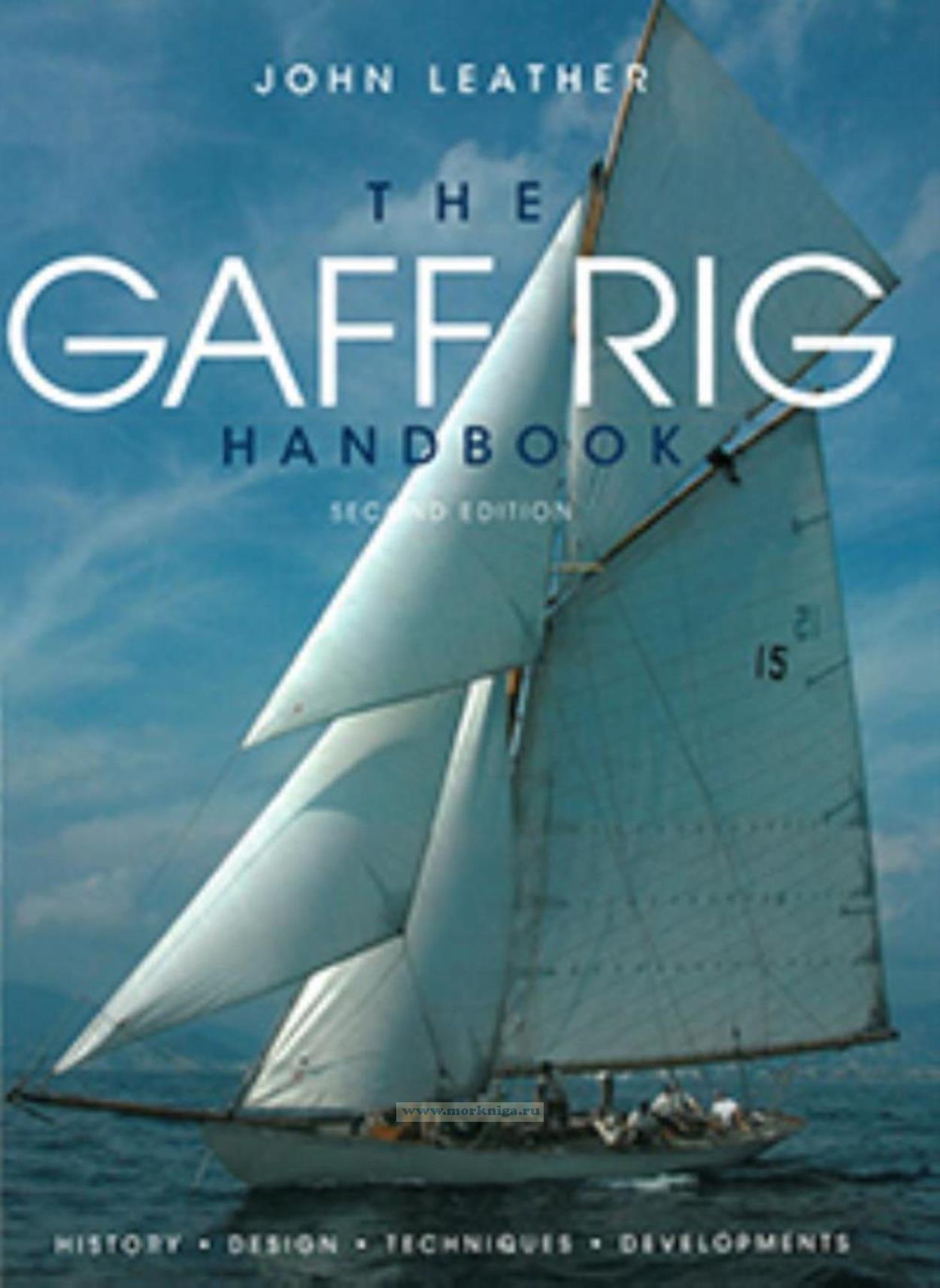The Gaff Rig Handbook. Second edition
CONTEMPORARY SEASCAPES are more likely to reveal yachts under sail or power than the now much less numerous merchant vessels or warships. Although the present sailing yacht is often a wonder of bermudian rig sailing ability, seaworthiness and accomodation comforts, and is built with a fibre reinforced plastic hull and aluminium-alloy masts and spars for reduced maintenance, a large and continually growing segment of leisure sailors prefer the much older gaff rig along with the more conservative hull forms and often wood construction which frequently go with it. This is not simply reaction to the technical advances and many undoubted advantages of contemporary yacht design and use. It usually stems from a strong desire to own, experience and savour the advantages of the older rig and its traditions.
This book was first published over 30 years ago when the revival of interest in traditional craft and their rigs and in yachts and pleasure boats of the past was getting into its stride. Since then interest and enthusiasm have developed beyond all expectation in countries all over the world, sometimes in the most unexpected places. This resurgence has led to a continuing need for knowledge of gaff rig and its application to various types of craft and this book is written for all interested in its past, present and future. It outlines the practical aspects of masts, spars, running and standing rigging and sails, and contrasts many types of British, American, Danish and French gaff rigged commercial sailing craft, fishing vessels and yachts, besides examining some economic and technical factors influencing their development. It also provides some historical background to the various craft setting the rig for work or pleasure and to those who designed, built and sailed them. During the past 31 years GAFF RIG has become internationally regarded as a handbook for those designing, building, rigging or just dreaming about gaff rigged craft, which is pleasing to the author and has encouraged its re-publication in expanded form.
About 90 years ago the use of gaff rig went into a decline which lasted for three decades, followed by a further 20 years of stagnation. But, since the early 1960s the rig has experienced a dramatic re-birth, initially, perhaps, as a reaction against the widespread use of bermudian rig in yachts. The rig's decline was affected by the rapid rise in use of the marine motor by fishing and other small commercial vessels, leading to the virtual extinction of craft working under sail and also by the widespread adoption of the bermudian rig for yachts. The unquestionably superior windward performance of bermudian rig applied to a suitable hull form resulted in almost blind acceptance of that rig as being best for yachts of almost all types, and for all purposes and conditions. There are many bermudian rigged yachts of great beauty, but some cruising yachtsmen prefer gaff rig for practical conditions of sail handling and lying more easily at anchor in a breeze. To others a well-built wooden craft of superior traditional design, with gaff rig, is also a thing of beauty, apart from its functional utility. Some are attracted by the rig's connection with working craft of the past, enjoying its appeal without the grinding toil endured by their crews.
Содержание
Introduction
1 Masts and spars
2 Standing rigging
3 Running rigging
4 Gaff sails and basic sailmaking
5 Gaff topsails
6 The boomless gaff sail
7 The catboat
8 The sloop
9 The cutter
10 Cutter yachts
11 The Essex smacks
12 The Solent and Poole fishing boats
13 Pilot cutters and schooners
14 The yawl
15 The ketch
16 The schooner
17 The fishing schooners of New England and Nova Scotia
18 The fishing boats of north west England
19 The little ships of Denmark
20 On the west coast of France
Epilogue
Index

 Круиз. Путевой дневник длиной в 25 000 км
Круиз. Путевой дневник длиной в 25 000 км  Тактика парусных гонок. Наиболее полное и современное руководство по тактике парусных гонок
Тактика парусных гонок. Наиболее полное и современное руководство по тактике парусных гонок